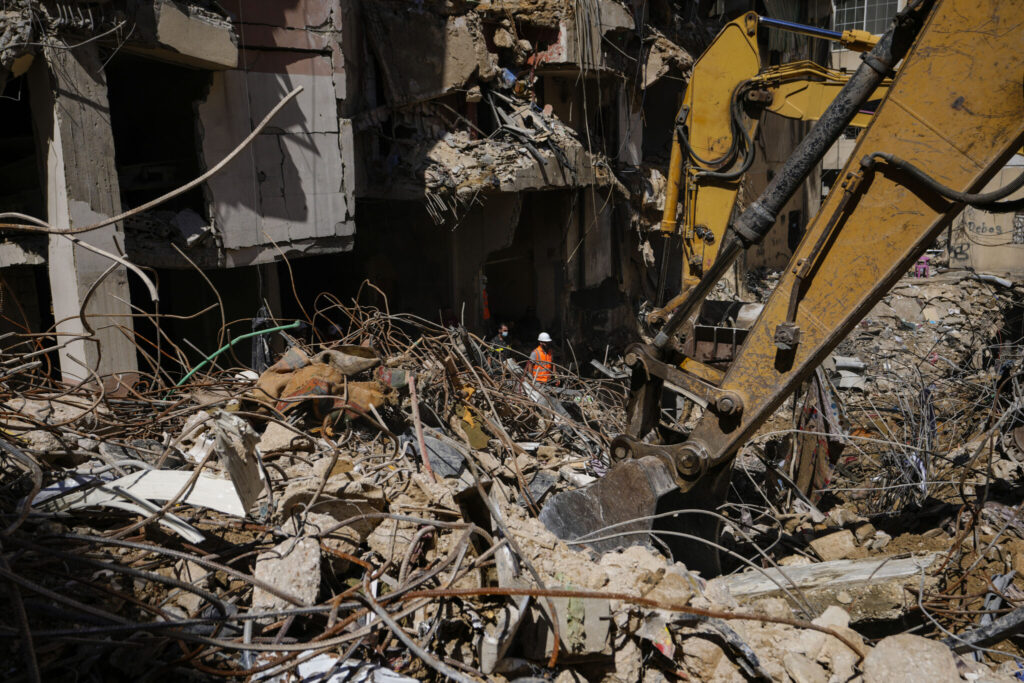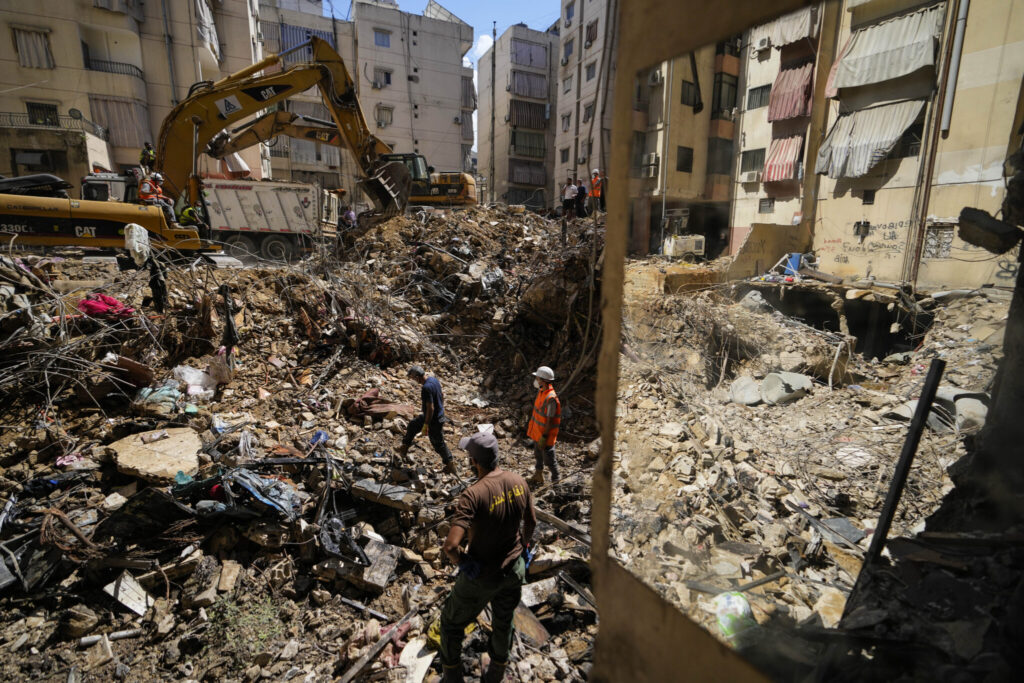Israel-Lebanon conflict/ Israeli bombings in Lebanon/ Hezbollah-Israel fighting/ Newslooks/ MARJAYOUN/ Lebanon/ J. Mansour/ Morning Edition/ Israeli airstrikes killed 274 people in Lebanon on Monday, marking the deadliest day of conflict since 2006. Thousands fled southern Lebanon as Israel warned civilians to evacuate ahead of further military actions against Hezbollah. The strikes, which targeted 300 sites, left over 1000 people wounded as tensions with Hezbollah continue to escalate.

Lebanon’s Deadliest Day Since 2006: Quick Look
- Israeli airstrikes killed over 274 people in Lebanon, with more than 1000 injured in one of the deadliest barrages since the 2006 Israel-Hezbollah war.
- Thousands of Lebanese civilians fled the south as Israel warned of more attacks, targeting Hezbollah sites across southern and eastern Lebanon.
- Israeli strikes hit residential areas and the Bekaa Valley, and extended as far as Byblos, 80 miles north of the border.
- Hezbollah retaliated by launching rockets into northern Israel and targeting Israeli military posts.
- Lebanese hospitals braced for more casualties as the government closed schools and universities in response to the crisis.
Israel Strikes Kill 182 in Lebanon, Sparking Deadliest Day Since 2006
Deep Look
In one of the deadliest days of conflict between Israel and Hezbollah since their 2006 war, Israeli airstrikes killed more than 274 people across Lebanon on Monday. The strikes came as Israel expanded its military campaign, targeting Hezbollah strongholds in southern and eastern Lebanon. Lebanese officials reported over 1000 wounded in the bombardment, which saw thousands of residents fleeing the south in an exodus not seen since the 2006 conflict.
The strikes were part of an escalating confrontation between Israel and Hezbollah, the Iranian-backed militant group that has launched numerous rocket attacks on Israel in solidarity with Hamas. Israel’s military announced that it hit 300 sites on Monday alone, focusing on Hezbollah weapon storage facilities and other military targets. The Israeli Defense Forces also extended the airstrikes beyond the immediate conflict zone, hitting areas in the Bekaa Valley and as far north as Byblos, more than 80 miles from the Israeli border.
This comes as the Israeli military issued stark warnings to Lebanese civilians, urging them to evacuate homes near Hezbollah storage facilities. “If you are in a building housing weapons for Hezbollah, move away from the village until further notice,” read a text message received by many in southern Lebanon, according to Lebanese media.
The scale of Monday’s strikes—the deadliest in over a decade—has intensified fears of a full-blown war between Israel and Hezbollah, as the conflict continues to grow alongside Israel’s ongoing battle with Hamas in Gaza. Hezbollah has vowed to persist with its attacks on Israel, firing dozens of rockets into northern Israel on Monday and targeting Israeli defense facilities.
Mass Exodus in Southern Lebanon
As Israeli bombs rained down on the region, Lebanese civilians scrambled to escape the violence. The main highway from Sidon, a southern port city, to the capital of Beirut was clogged with vehicles as families fled the escalating bombardment. The exodus marked the largest mass movement of people since the 2006 war, when many Lebanese civilians also sought refuge from Israeli airstrikes.
The Lebanese government acted quickly, ordering schools and universities to close across much of the country. Hospitals in southern Lebanon and the Bekaa Valley were instructed to postpone non-urgent surgeries in order to make room for those wounded by the attacks. In a statement, the Lebanese Health Ministry described the airstrikes as “Israel’s expanding aggression on Lebanon” and warned that the situation could worsen in the coming days.
Israel’s Military Strategy
While the Israeli military has conducted airstrikes throughout the conflict, Monday’s barrage was particularly extensive. The strikes targeted Hezbollah positions deep within Lebanon, far from the Israeli border. The air campaign was also broadened to include areas along Lebanon’s eastern border with Syria, where Hezbollah has a significant presence.
An Israeli military official, who spoke anonymously, said that while Israel’s current strategy is focused on air operations, there are no immediate plans for a ground invasion. The official stated that the strikes are intended to degrade Hezbollah’s ability to launch further attacks into Israel.
Despite the massive scale of the attacks, Hezbollah remains determined to retaliate. In a statement, the group confirmed that it had fired dozens of rockets into northern Israel, targeting Israeli military outposts and defense facilities. This included an attack on the Haifa-based Rafael defense firm, a strategic site for Israel’s military.
Growing Fears of All-Out War
The conflict between Israel and Hezbollah, which began shortly after Hamas’ surprise attack on Israel on October 7, has continued to escalate. While Hezbollah initially fired rockets into Israel as a show of support for Hamas, the fighting has now expanded into a broader, more intense confrontation.
Israel, which is still grappling with the fallout from Hamas’ attack and the ongoing battle in Gaza, has vowed to restore calm to its northern border. However, the increasing scale of the conflict with Hezbollah suggests that tensions may only worsen in the weeks ahead. Israeli leaders have warned that Hezbollah’s use of civilian areas to store weapons may force Israel to expand its military campaign, possibly leading to even more devastating consequences for the region.
International Reactions and Humanitarian Concerns
The international community has voiced growing concerns over the escalating violence in Lebanon, with calls for a ceasefire gaining momentum. However, Hezbollah remains adamant that it will continue its attacks until there is a ceasefire in Gaza, complicating efforts for peace.
In addition to the human toll, the conflict has also caused widespread destruction across Lebanon, displacing tens of thousands of people and damaging critical infrastructure, including agricultural land. Fires ignited by the fighting have ravaged large areas, further compounding the suffering of Lebanese civilians.
The Road Ahead
As the conflict nears its anniversary, with no sign of a ceasefire on the horizon, Lebanon continues to bear the brunt of the violence. Hezbollah’s support for Hamas, coupled with Israel’s determination to neutralize Hezbollah’s military capabilities, suggests that the region is poised for even more turmoil in the weeks ahead.
Israel has reiterated its commitment to pushing Hezbollah back from the border so that Israeli citizens can return to their homes. Meanwhile, Hezbollah has pledged to continue its attacks until the violence in Gaza comes to an end, setting the stage for an increasingly destructive conflict that shows no sign of abating.







